Visit the Valley of the Seven Bulls, see Issyk-Kul and relax in the thermal springs
- Duration: 2 days.
- Price: from 700$ 620$ for group
- Group size: Small group tour

Chon-Kurchak Gorge is located just ~45 km south of Kyrgyzstan’s capital, Bishkek. It lies on the northern slopes of the Kyrgyz Range (Ala-Too) - a ridge of the Tien Shan forming the southern boundary of the Chu Valley. The elevation reaches about 2400 m above sea level, making Chon-Kurchak a high-mountain gorge. The name “Chon-Kurchak” translates from Kyrgyz as “depression” or “deep basin,” reflecting its terrain. The gorge has tectonic and erosional origins: over centuries, a mountain stream (the upper reaches of the Alamüdün River) eroded the rock, carving a narrow valley through cliffs. The landscape uniquely combines green alpine meadows and coniferous forests with reddish sandstone cliffs set against snowy peaks. Approaching along the switchback road, impressive panoramas unfold - Chon-Kurchak’s calling card in the Chu Valley. The gorge entrance is narrow and hidden; once inside, the valley widens and merges with the larger neighboring Tatyr Gorge. A mountain stream runs through Chon-Kurchak, forming below the dramatic 35-40 m Blue Waterfall. Legend says the waterfall is named for the doves that once nested in the cliffs - today its torrents plunge downward, shattering over rocky “steps” and spraying mist into the air.
Chon-Kurchak is one of Kyrgyzstan’s smallest yet most beautiful gorges. Thanks to its rich pastures and water, these places served for centuries as jayloo - summer camps for Kyrgyz herders. The small valley, ringed by mountains, perfectly suited the nomadic lifestyle: herds grazed, yurts were pitched, and kumis (fermented mare’s milk) was made here. Local folklore reflects this. According to the legend of the hero Bishkek, the hero once lived in the upper reaches of the Alamüdün River, in the Chon-Kurchak area. Later, Bishkek-batyr moved downstream, where the city of Bishkek - today’s capital - arose. Thus, Chon-Kurchak indirectly features in the city’s epic founding as the hero’s early home.
Today Chon-Kurchak’s cultural importance is seen in its conservation efforts and revival of traditions. The gorge is designated a national biosphere reserve to protect rare endemic flowers and ecosystems. An ethno-complex, “Supara Chon-Kurchak,” immerses visitors in Kyrgyz daily life. Guests can stay overnight in stylized traditional houses or yurts, sample local dishes and drinks. Thus, Chon-Kurchak is not only scenic but also a living corner of national culture, where modern tourists touch nomadic heritage.
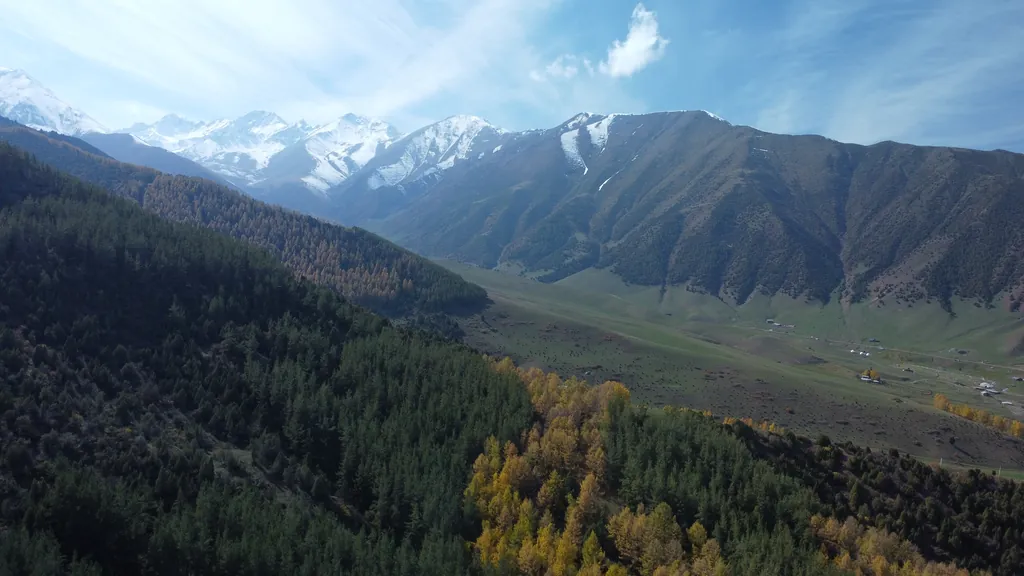
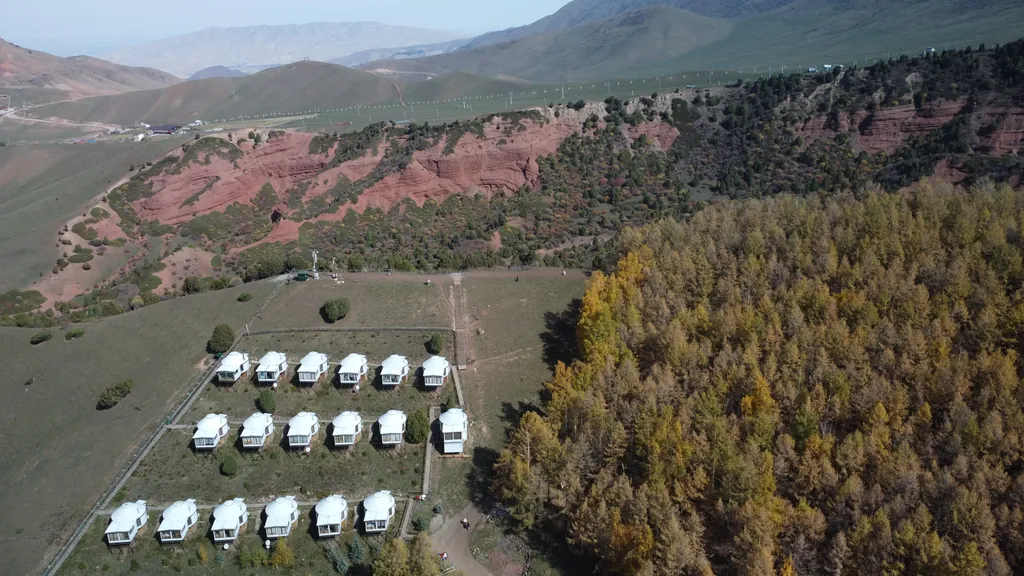
Chon-Kurchak Gorge’s climate is mountainous and sharply continental. Summer is mild and relatively cool at higher elevations (July days +18…+22 °C, nights quite cold), while lower elevations near the gorge mouth can be hotter, akin to the Chu Valley. Winter is snowy and frosty: a stable snowpack usually forms in December, turning Chon-Kurchak into a natural ski resort. Spring brings frequent rains and fogs, but the gorge truly comes alive then. In April-May melting snow fills waterfalls and streams, and slopes are carpeted in fresh green and spring flowers. Autumn (September-October) enjoys clear, warm weather, golden grasses, and wild berry harvests. The tourist season for leisurely excursions generally runs April-September, while winter draws winter-sports enthusiasts.
Chon-Kurchak’s flora is rich, befitting its biosphere-reserve status. At the mountains’ base stretch alpine meadows that become a floral kingdom in spring. The gorge’s pride is its rare wild tulips - especially the Royal Tulip, an endemic species with large blooms up to 15-18 cm tall, which paints slopes in bright red patches. Another famed variety, the “Zinaida” tulip, has scarlet petals streaked with green and gold veins. In peak spring, thousands of tulips carpet the valley, creating a “scarlet sea” of blooms. Hence Chon-Kurchak is often dubbed a small mountainous Holland. In summer, meadows bloom with thistles, hogweed, alpine asters, and edelweiss. Among trees stand both coniferous and deciduous groves: Tian Shan spruce and pine interspersed with low-growing juniper (archa). Along valley floors you find birch, rowan, and relict Tian Shan larch. Shrubs like rosehip, barberry, currants, sea buckthorn, and, in adjacent gorges, wild raspberry and blackberry form dense thickets. In autumn, the mountains blaze in crimson and gold against reddish rock and evergreen fir - creating vivid, photogenic contrasts.
The gorge’s fauna typifies the Tien Shan foothills. Secretive mountain goats roam the rocky cliffs, often glimpsed at dawn. Small mammals include marmots on the alpine meadows, pikas, and hares. Forested areas shelter foxes and wolves, though they shy away from busy trails by day. Birdlife is abundant: eagles and golden eagles soar overhead, watching for prey on the slopes. By streams and waterfalls you spot rock thrushes and water rails, and curious chipmunks and squirrels frequent tourist areas. The biosphere reserve protects plants and animals - Chon-Kurchak forms part of Northern Kyrgyzstan’s ecosystem, which includes rare species (snow leopards, brown bears) in the high, remote peaks. For most visitors, the main “safari” is photographing grazing horses and yaks on the slopes and watching steppe eagles gliding majestically above the valley.
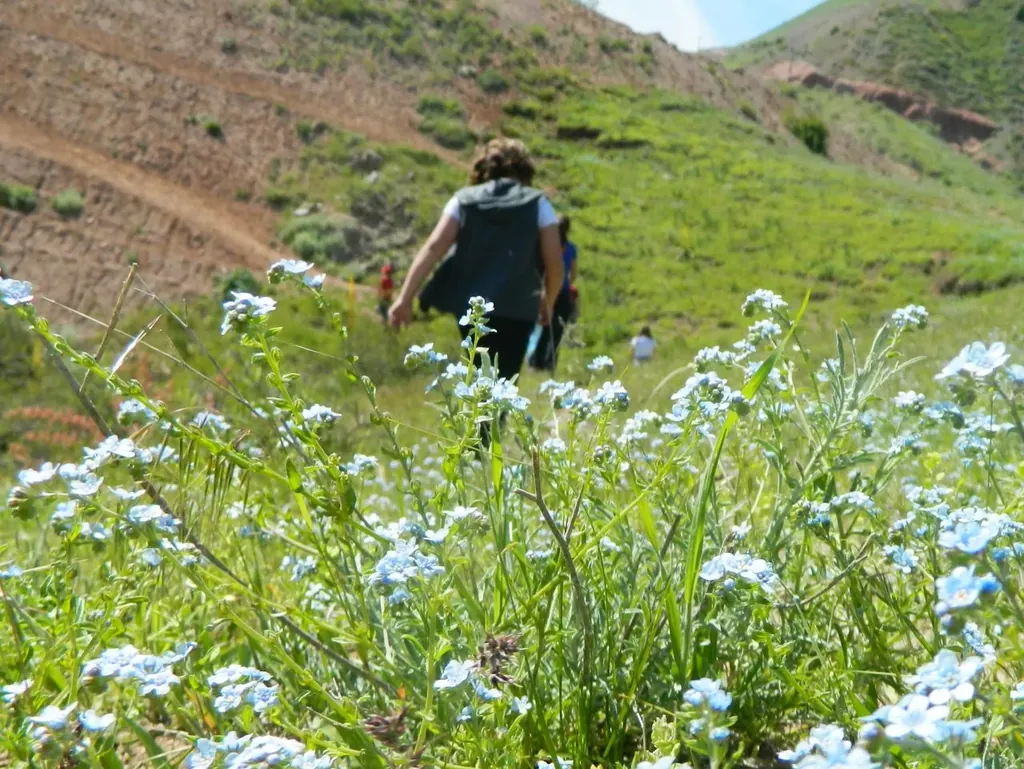
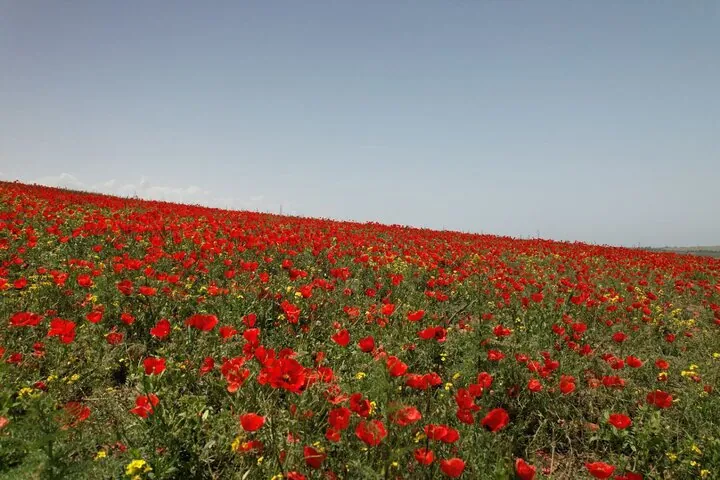
Despite its relative remoteness, Chon-Kurchak is well set up for tourists. The drive from Bishkek takes about an hour. The route passes through the village of Tash-Dobo, then climbs scenic switchbacks into the mountains. The final kilometers are on a dirt road that can be challenging - especially after rain - so a careful driver or 4x4 is advised. In winter, snow clearing is irregular; reaching the gorge requires prepared transport or joining guided tours. Using an experienced guide or tour operator for transfers and accompaniment is optimal.
Accommodation and Dining: You can stay overnight in Chon-Kurchak - several small hotels, guesthouses, and summer yurt camps operate here. The best-known is the “Supara Chon-Kurchak” ethno-complex - a mountain resort with national-style decor. Guests stay in authentic yurts equipped with modern comforts. An on-site restaurant serves traditional cuisine prepared from old recipes. Besides Supara, there are cafés and tea houses offering fragrant Kyrgyz dishes - shashlik, pilaf, flatbreads, and fresh mountain trout. You can also sample dairy products straight from the farm. At ~2000 m elevation, the mountain air enhances appetite and mood.
Services and Amenities: The tourist infrastructure keeps growing to ensure comfort. Mobile coverage is available from major operators (though signal may drop deeper in the gorge). Designated parking areas, equipment rental points, and restroom facilities are found near lodgings. Winter sports enthusiasts can rent skis, snowboards, and boots locally. In summer, you may need to bring camping gear, though some guesthouses rent tents or sleeping bags on request. The central meadow has picnic areas with shelters, tables, and grills for meals in nature. For safety, rescue posts and mountain-sport instructors are on duty in season. National hospitality shines in small touches: signage in Kyrgyz and English shares place names and legends, and carved wooden figures of epic heroes and Manas characters by local artisans adorn the gorge. This blend of wilderness and civilization makes Chon-Kurchak an inviting destination - where mountain silence meets warm lodging and delicious dinner.
Chon-Kurchak Gorge is a paradise for nature lovers and adventure seekers alike. Here everyone finds their niche - from peaceful meadow walks to extreme ice climbing on frozen walls.
Hiking and Trekking. Chon-Kurchak is ideal for hikers. The gorge stretches nearly 30 km deep, offering routes from short one-hour walks to full-day hikes. You can stroll beside the rushing stream or ascend nearby passes for panoramic views of the Chu Valley and distant snowy peaks. Trails wind through spruce forests, open onto subalpine meadows, and pass intriguing rock formations. Spring and early summer are especially picturesque, with blooming wild tulips and poppies. Photographers and eco-tourists love this season. Some paths are waymarked, and railings help on tricky sections. Beginners may prefer a guide to discover hidden gems and hear local legends. Yet even with a map, a short weekend hike is easy - Chon-Kurchak is a favorite escape for Bishkek residents.
Horseback Tours. Feel like a nomad galloping across mountain meadows. Local stables offer guided horseback rides: hour-long rides around the gorge or longer trips to distant pastures and jayloo. These mountain horses are hardy and well adapted to rough trails. Riding lets you tackle higher passes and take in vast landscapes. Popular is the ride up to a ridge overlook with valley views below. Riders pass through juniper thickets and pine groves, often glimpsing shepherd camps. Summer horse tours are especially pleasant: the weather is warm, grass is lush, and horses graze freely during breaks. Families enjoy letting children ride ponies. Horse tours deepen cultural understanding - horses are central to the nomad’s life. In a few hours, riders can reach wild, beautiful corners that on foot would require a full-day trek.
Skiing and Snowboarding. In winter Chon-Kurchak becomes a hub for snow sports. A ski base offers slopes for all levels and equipment rental. The main “Chon-Kurchak” ski area has lifts and gear shops. Gentle slopes are perfect for learners, while steeper runs stretch for several kilometers. Vertical drops of 300-400 m and top elevations around 2500 m ensure reliable snow. Instructors teach lessons, and nearby ravines host sledding and tubing family fun. Winter transforms the gorge into a snowy playground under clear blue skies.
Camping and Picnicking. Nature lovers can pitch tents in designated gorge areas. Waking at dawn to mountain birdcalls and chilly morning air is priceless. Several scenic meadows allow camping and campfires (with fire-safety rules). Summer nights are mild enough for camping at ~2000 m (5…+10 °C). Campers marvel at the starry skies and Milky Way overhead. Day picnics are popular, too: beside the stream, visitors grill shashlik or cook pilaf over open fires. Mountain water, though icy, is refreshing. Picnic spots have shelters and benches, though many spread traditional dastarkhan cloths on the grass. Respecting the biosphere, all trash must be packed out to keep the reserve pristine.
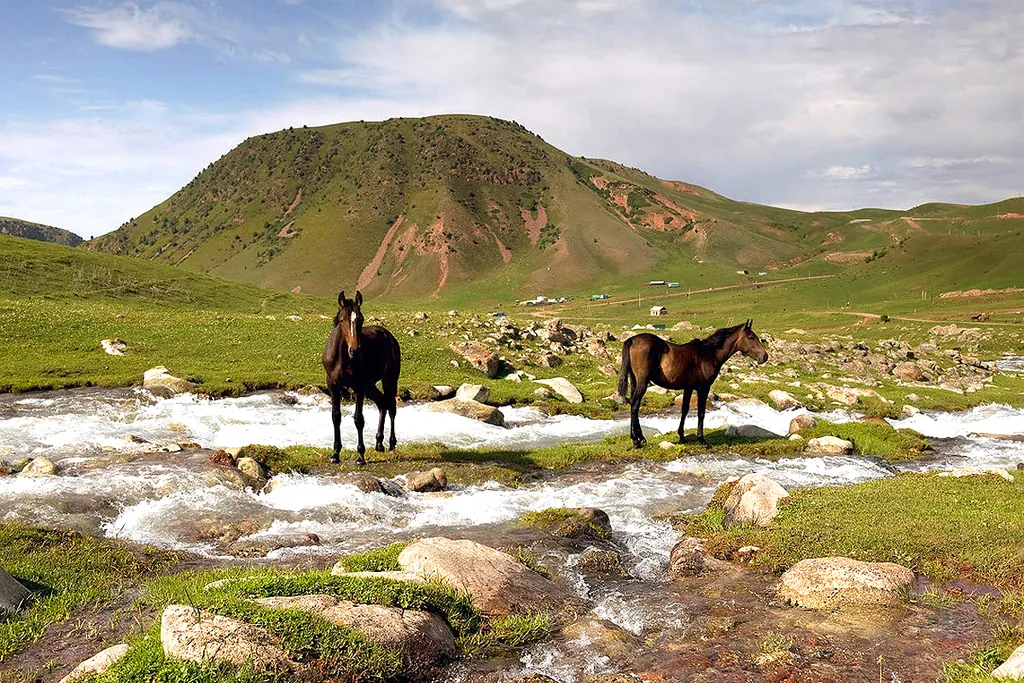
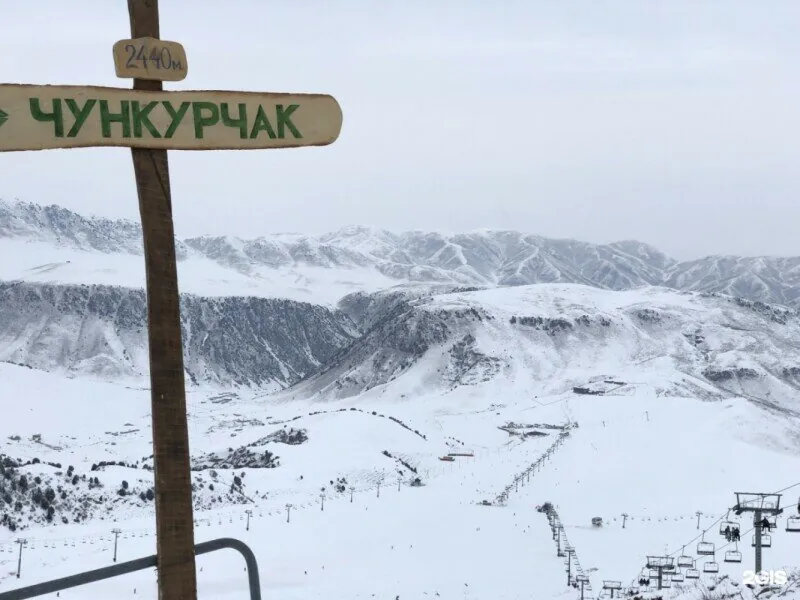
Each season reveals a new facet of Chon-Kurchak, so plan your trip for the experiences you seek.
Spring (April-May): one of the gorge’s most beautiful times. In late April and early May, endless fields of wild tulips bloom - worth a once-in-a-lifetime visit. Mountain slopes turn bright green, and the air is perfumed with flowers. Daytime temperatures reach +15…+20 °C, while snow patches linger at higher elevations, feeding streams and waterfalls. Spring is prime for photographers and eco-tourists, spotting rare plants. Be prepared for variable weather - rain and muddy roads in April - but the blooming “mini Holland” of tulips is unforgettable.
Summer (June-August): high season. Roads dry, skies clear, and all facilities operate at full capacity. June remains fresh and green after spring blooms; meadows fill with lupines and poppies. July and August bring daytime highs of +25…+28 °C in the valley, but +18…+20 °C above 2000 m - perfect hiking weather. Summer is ideal for hiking, horseback riding, stargazing, and cooling off in waterfalls. Berries ripen, and mushrooms appear in birch groves. The gorge buzzes on weekends with ethnic festivals and open-air concerts. Evenings are cool enough for campfires under the stars. Families love summer stays for active days and cozy nights. In sum, summer blends adventure and relaxation in Chon-Kurchak.
Autumn (September-October): the “velvet season.” Early autumn brings clear skies, mild days (+15…+20 °C in September; +10…+15 °C in October), and golden grasses replacing summer green. Photographers cherish the autumn palette. Visitor numbers drop, but facilities remain open through October. It’s a perfect time for long hikes: no bugs, shallow streams, and crisp air with visibility for miles. Late October nights start to freeze, and first snows dust peaks - but for solitude seekers, September and early October offer peaceful, exclusive mountain experiences. Note that some services (horse rental, weekday cafés) may reduce hours - plan ahead.
Winter (November-March): a snowy realm of extremes. By November snow begins, and December blankets the gorge. Daytime -5…-10 °C; nights can dip below -15 °C. December marks ski season, with lifts and groomed slopes. January-February are prime for winter sports: skiers, children sledding, and snowball fights. Beyond skiing, try snowshoe hikes, cross-country skiing, and snow tubing. The gorge’s sunny winter days showcase sparkling snow and crisp blue skies - an unforgettable winter wonderland.
Proximity to the capital and easy access. Unlike remote valleys, Chon-Kurchak is under an hour’s drive from Bishkek. The gorge sits on the city’s doorstep, yet inside you feel immersed in wild nature. Few mountain locations combine this convenience with secluded wilderness. Ala-Archa National Park is similarly close but offers no overnight stays; Chon-Kurchak provides lodging. Many appreciate a quick mountain escape without a long drive.
Compact area with remarkably diverse landscapes. Stretching only ~30 km, Chon-Kurchak - called “tiny” among Tien Shan giants - encompasses snowy peaks, red canyon cliffs, dark green forests, light green meadows, and a central stream with waterfalls. No other nearby gorge packs such a “color symphony”: Ala-Archa has forests and glaciers but no red cliffs; Konorchek has red canyons but lacks green meadows and snow nearby. Chon-Kurchak is a mini-Tien Shan, highly photogenic and vivid.
Unique natural heritage - fields of wild tulips. Chon-Kurchak was chosen for a national biosphere reserve to protect its rare tulips. The Royal Tulip, endemic here and listed in the Red Data Book, is the gorge’s signature and a symbol of Kyrgyzstan - an “alabaster sea” of blooms every spring. Botanists and flower enthusiasts flock here; in one April day, you see more wild tulips than in many European preserves. This floral fame sets Chon-Kurchak apart - no other nearby gorge offers such springtime spectacle.
Blend of modern comfort and national character. While many mountain sites offer only basic camping or rustic shelters, Chon-Kurchak pleasantly surprises with developed infrastructure wrapped in authentic charm. Cozy hotels and the ethno-complex let travelers experience nomadic life without sacrificing comfort - an ideal balance for contemporary visitors.
Visit the Valley of the Seven Bulls, see Issyk-Kul and relax in the thermal springs
Forgotten Rivers and Mountain Peaks: A Journey Along the Southern Shore of Issyk-Kul is a three-day tour that immerses you in the unique natural beauty of Kyrgyzstan.
Skiing, mountains, and the winter atmosphere of Kyrgyzstan. A one-day ski trip to Orlovka – skiing near Bishkek
In 3 days we will travel around Lake Issyk-Kul. We will spend two days in the city of Karakol, devoting them to skiing at the ski resort. And we will also relax in the thermal springs!
Experience all the beauty of Kyrgyzstan's nature behind the wheel of a comfortable and daring BMW F650GS tour enduro. These impressions are worth any money and will never be forgotten.
This route combines the picturesque mountain canyons of Kok-Moinok, Lake Issyk-Kul, the taste of national cuisine and a trip along one of the most beautiful roads in the country – the Boom Gorge.
Visit two pearls of Kyrgyzstan in 1 day on a car tour